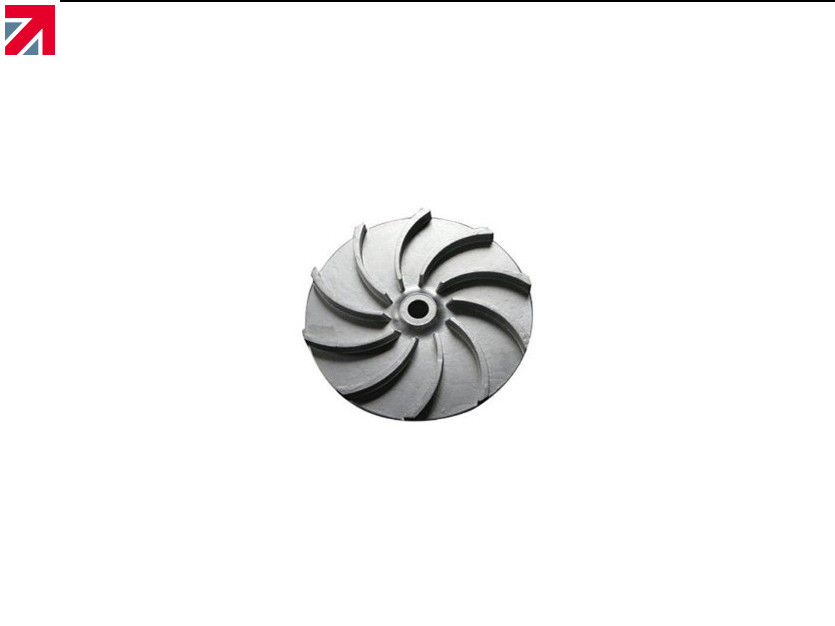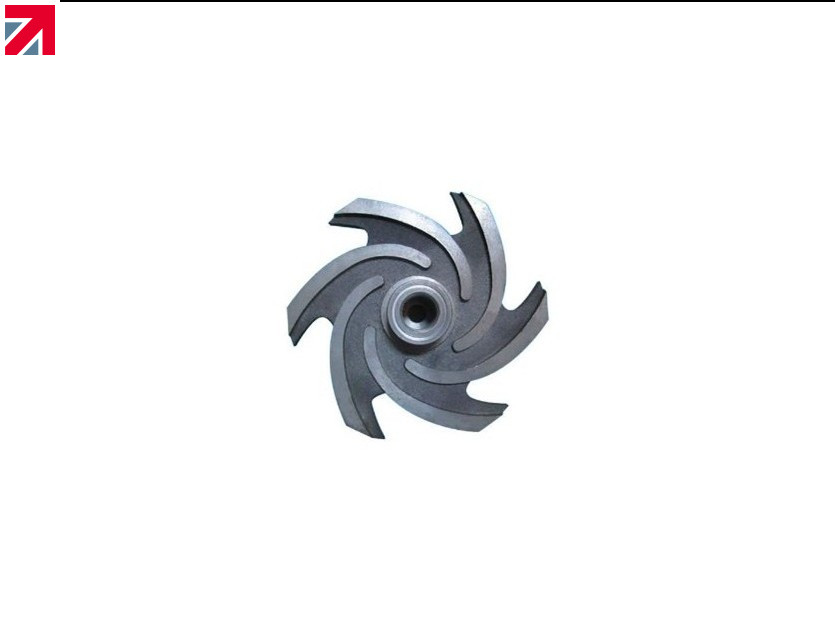A guide to Centrifugal Impellers
Centrifugal pump impellers come in many shapes and sizes, each having their own uses and advantages. There are two aspects of the impeller, regardless of the type, that are worth remembering:
Impeller Diameter:
The diameter of a centrifugal impeller relates directly to the head that the pump can produce. The greater the diameter then the greater the velocity of the liquid as it leaves the impeller and the higher the head produced.
Depth of Vanes:
It logically follows that a shallow depth vane will produce less flow than an impeller with a deeper vane. Consider the volume of an impeller that is 20 cm in diameter with 1 cm deep vanes. The volume of the impeller (pi x r2 x h) is 314 cm2 less the volume of the impeller vanes (say 10%) = approx. 280 cm2 (0.28 l) per revolution. If you double the vane depth to 2 cm then the volume doubles to 560 cm2 (0.56 l) per revolution. Of course, this assume the pump is 100% efficient which it will never be because of internal fluid turbulence and slippage across the impeller and casing, but it illustrates how the depth of the vane will be proportionally representative to the flow it can produce.
Closed Impeller
A closed impeller is the most efficient form and is ideal for handling clean liquids with low viscosity. Consisting of two plates (known as shrouds) either side of the impeller vanes and a boss, extending from the front shroud into the pump suction to guide the liquid into the impeller eye. This will be a close tolerance and may even have a wear plate to prevent as little liquid as possible to escape from the impeller eye. Generally speaking, pumps with closed impellers require a lower NPSH. Click here for more information about NPSH.
Semi-Open Impeller
Semi-Open impellers, as the name suggests, only have a back shroud for stability and strength, they may be regarded as the middle ground in terms of efficiency and NPSH requirement but are very useful when handling liquids with an amount of solids or of a slightly higher viscosity.
Open Impeller
Distinguishable by the lack of a back shroud (or minimal in some cases) this is the weakest form of impeller in terms of mechanical strength but performs best in solids handling applications. Open impellers are the least efficient impeller form requiring more NPSH when employed in a pump. Typically used in smaller inexpensive efficiency is less important due to the low power required by the pump.
This is not an exhaustive list but is intended as a general guide to the impellers found in most centrifugal pumps. For more information or a specific quotation please contact us on 01425 627700 or email us on info@crestpumps.co.uk
Find out more about Crest Pumps Ltd on their member profile page here
Member-created content 4 years ago | From members


